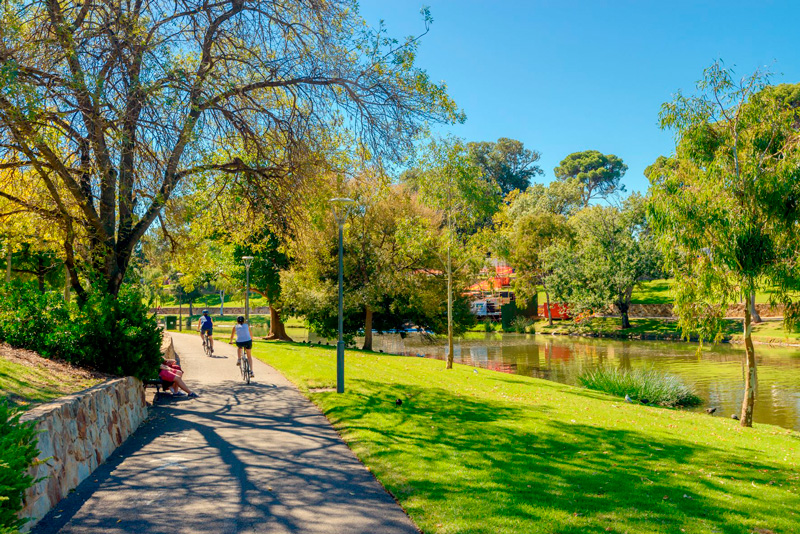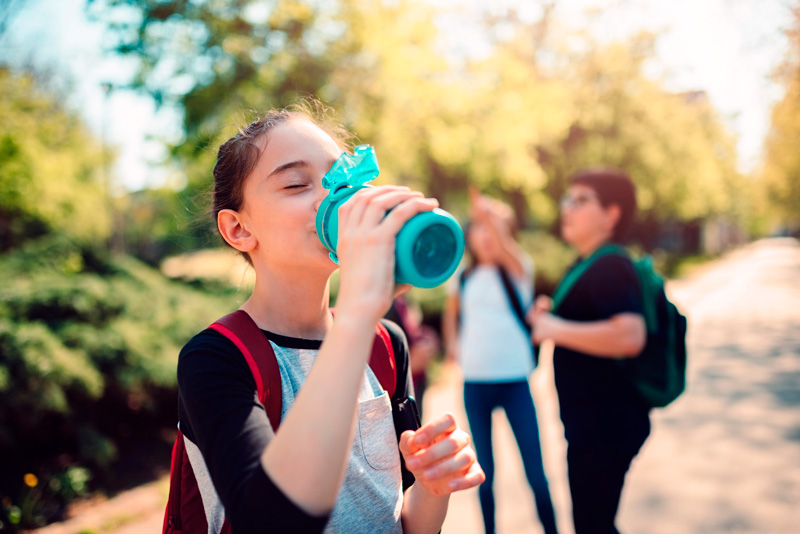How to Encourage Water Conservation in Your Community
Posted by Joel Pelina on Jun 16th 2022
Reducing the amount of water used in the household is an important contribution toward water conservation. Using water more efficiently in the kitchen, bathroom, and yard can save money and reduce the personal impact on nearby water and energy resources. It’s a good start, but to help spread the effects of water conservation, it is important to know how to encourage water conservation beyond the home and throughout your community.
Make It Relatable
Water conservation, much like environmental activism, can often be a nebulous concept for people. Does it mean drinking less water? Taking fewer baths or showers? Watering the lawn less often? The initial hurdle to spreading the word about water conservation is to get the message out in a way that is relatable to people. Here are some tips that may help in making the concept of water conversation more relatable:
- Make it about money. You can get some people to pay closer attention to water conservation by demonstrating the financial savings of home water efficiency. It helps to have a “before” and “after” water bill comparison to show the impact that using low-flow toilets and showerheads, high-efficiency washing machines, or using dishwashers over hand-washing dishes can have on water consumption.
- Make it about the habitat. People interested in nature, the outdoors, hunting, fishing, environmentalism, or other wildlife may be able to better relate to water conservation when you frame it in terms of preserving the natural habitat and surroundings. It’s harder to hunt or fish when the local lakes or rivers are decreasing each year, and it’s harder to enjoy nature when forests and wildlife have less water to use due to the surrounding communities’ usage.

- Make it about the community. Especially for communities that live in drought-prone or arid environments, it is important to frame water conservation as a necessity to preserve existing water sources for current and future use. Neighborhoods and businesses cannot be supported if local water supplies are in danger of disappearing, and families must think of the future they need to preserve for their children.
Encourage Your Neighbors
Before you start encouraging water conservation beyond the home, you need to make sure you are practicing water conservation in your home. Using low-flow showerheads, high-efficiency toilets and washing machines, and faucet aerators at every sink shows guests and neighbors that you are doing your part to conserve water in the home. Converting your lawn and yard to less water-intensive plants and landscaping shows your neighbors viewing the outside of your house that you care about efficient water usage. In turn, this opens the door to water conservation discussions with curious neighbors and guests.
You can directly influence your neighborhood if you are part of a Homeowners’ Association (HOA), or if you regularly attend HOA meetings. During these meetings, you can share your thoughts and knowledge on water conservation; for the financially-minded, highlight the savings in water usage and billing, while for the aesthetically-minded, come prepared with samples of water-efficient landscaping that both conserves water while maintaining a pleasant appearance. Keep an eye out for similarly-minded people in your neighborhood, as it helps to show that your water conservation ideas have broader support in the area.
If you have a regular neighborhood or HOA newsletter, offer to write a segment on water conservation tips – something small, simple, and easy for anyone to do. Each month, you can put forth a new tip, so that your small water conservation efforts add up over time.
Be there to help your neighbors if they ask for advice on water conservation. Share your own experiences, and help them accomplish similar water conservation changes in their house and yard.
Encourage Water Conservation in Schools
Students with a sense of environmental awareness will understand that water conservation directly impacts their future environment. By encouraging water efficiency and preserving freshwater sources, students can protect the world they will inherit as adults.

- Use refillable water bottles instead of disposable plastic bottled water. Disposable bottled water uses up three times the amount of water in its production than it holds. By filling stainless-steel or glass reusable water bottles at home and bringing them to school – and then encouraging classmates to do so as well – students can reduce the impact of disposable bottled water production while simultaneously reducing the impact of plastic waste in the environment.
- Limit the amount of food taken in the cafeteria to one plate, and skip using a lunch tray entirely. Most of the water used in the cafeteria is devoted to washing dishes and trays. Water can be conserved by reducing the number of items that need to be washed.
- Save water used to clean up in labs and art rooms by using buckets of water rather than using constantly-running water from the sink.
- Leverage the power of student-organized clubs to encourage environmental awareness and water conservation, spreading your message around the school campus much more effectively.
- Work with teachers and administration officials to encourage more water-efficient landscaping that utilizes gravel, drought-resistant plants, and other measures to reduce the need for sprinkler usage.
- Report water leaks to school authorities whenever you can, such as running faucets, leaking pipes, or broken water fountains.
With small, consistent efforts, and with a willingness to share your knowledge and help others, you can spread your personal work toward water conservation beyond your home and family. Serve as a good example, and help people find their own means to conserve water and help preserve the future of your local water resources.
References
- “8 Ways to Promote Water Conservation around Your Neighborhood.” The Earth Project. December 26, 2018. https://theearthproject.com/promote-water-conservation/
- Brassaw, Brian. “11 Steps to Encourage Water Conservation in Your Community.” Earth911. August 16, 2021. https://earth911.com/inspire/encourage-water-conservation/
- “Encouraging Water Conservation.” ideas42. Last accessed June 8, 2022. https://www.ideas42.org/project/encouraging-water-conservation/
- “How to Conserve Water in the Community.” Fairview Township Sewer & Water. Last accessed June 8, 2022. https://www.fairviewsewerandwater.com/how-conserve-water-community
- Savage, Kristin. “How Can Students Save Water at School?” Smart Water Magazine. November 26, 2019. https://smartwatermagazine.com/blogs/kristin-savage/how-can-students-save-water-school
- “Water Conservation at the Community Level.” Useful Community Development. Last accessed June 8, 2022. https://www.useful-community-development.org/water-conservation.html

